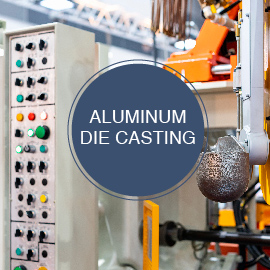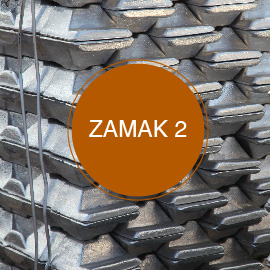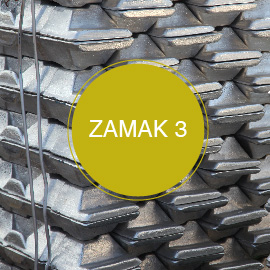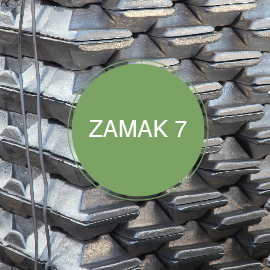ZINC ALLOY ZAMAK 5
Zamak 5 is an alloy of Zinc that is also commonly known as Zinc Alloy 5, ZnAl4Cu1, or ASTM AC41A. It has balanced material properties compared to Zamak 2 and Zamak 3 Alloy. It is the most commonly used Zamak alloy in the Europe region.
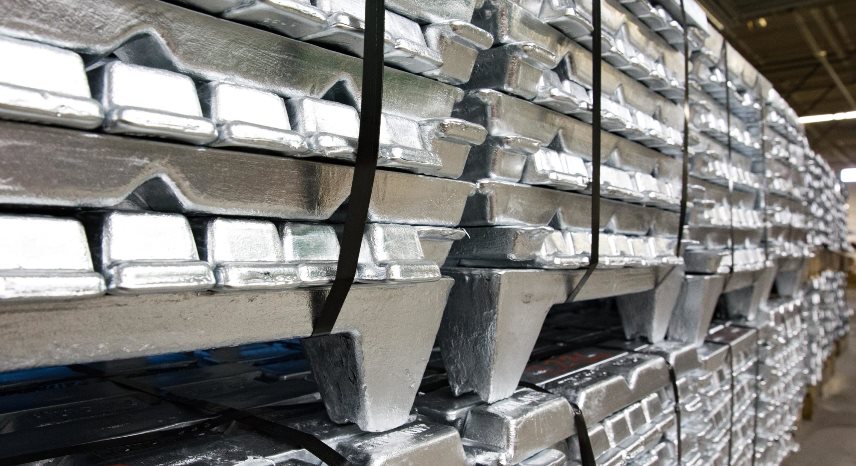 Zamak 5 Characteristics
Zamak 5 Characteristics
Zamak 5 alloy is cast through hot chamber die casting and has a similar alloy composition as that of Zamak 3. But It has one percent extra copper that imparts additional strength, hardness, and corrosion resistance to the alloy.
The ductility and dimensional stability of the alloy are average. Moreover, it has slightly inferior pressure tightness and resistance to hot cracking than that of other Zamak family alloys. But the ease and quality of machining, polishing, electroplating, and finishing of parts are similar to that of other Zamak alloys.
Advantages
Some of the main advantages of Zamak 5 are as follows:
- Has about 10% higher strength than Zamak 3
- Has Excellent machinability
- Has better hardness and corrosion resistance
- Easier to plate or finish compared to Zamak 3
- Can be recycled
Applications
The better mechanical strength of Zamak 5 alloy makes it suitable for high-stress applications. It also has excellent corrosion resistance. However, the alloy is less ductile in nature. So, applications involving forming operations such as bending, crimping, riveting, etc. may be difficult.
Some of the common applications include automotive components, decorative parts, interior lighting, toys, furniture lock and handles, door handle lock and hinges, etc.
Mechanical Properties
| Parameters | Value |
| Brinell Hardness | 91 HB |
| Ultimate Tensile Strength | 328 MPa |
| Yield Strength (0.2%) | 269 MPa |
| Shear Strength | 262 MPa |
| Compressive Strength | 600 MPa |
| Fatigue Strength | 56.5 MPa |
| Impact strength | 65 J |
| Modulus of Elasticity | 96 GPa |
| Elongation | 7 % in 50mm |
Physical Properties
| Parameters | Value |
| Melting Range | 380-386 °C |
| Density | 6.60 g/cm³ |
| Electrical Conductivity | 26 % IACS |
| Thermal Conductivity | 109 W/mK |
| Specific Heat Capacity | 419 J/kg-°C |
| Coefficient of Thermal Expansion | 27.4 µm/m°K |
| Poisson’s Ratio | 0.30 |
Alloy Composition
| Contents | Value |
| Zinc (Zn) | Balance |
| Aluminum (Al) | 3.9-4.3 % |
| Copper (Cu) | 0.70-1.10 % |
| Magnesium (Mg) | 0.03-0.06 % |
| Iron (Fe) | 0.035 % (max) |
| Lead (Pb) | 0.004 % (max) |
| Cadmium (Cd) | 0.003 % (max) |
| Tin (Sn) | 0.0015 % (max) |
Manufacturers often prefer Zamak 3 alloy due to its high availability. Similar results to Zamak 5 are obtained through design modifications of Zamak 3 castings.
Which Zamak Alloy to Choose?
It can be overwhelming to choose the right to allow with so many options at hand. Experts at Sunrise Metal can help you choose the best Zinc die casting alloy to best suit your project.
You can also request for quote for Aluminum or Zinc die casting parts from us.


